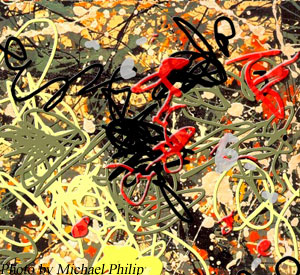Beauty in the Brain of the Beholder
 Why is it that what one art critic considers a masterpiece looks like a child’s finger painting to someone else? Psychological scientists are looking for answers by analyzing art, society, and the human brain.
Why is it that what one art critic considers a masterpiece looks like a child’s finger painting to someone else? Psychological scientists are looking for answers by analyzing art, society, and the human brain.
In a paper published in March 2011 by the Journal of Cognitive Psychology, Annukka K. Lindell and Julia Mueller review scientific research addressing subjective visual art appreciation. While Lindell and Mueller acknowledge that science may never be able to predict anyone’s reaction to a piece of art with complete accuracy, they also report that studying the psychology of visual art has allowed scientists to understand which variables contribute to our preferences.
According to Kindell and Mueller, bottom-up influences such as abstraction, form, complexity, and symmetry can be used to predict a viewer’s response to art. Top-down influences such as novelty and life experiences of the viewer also influence artwork’s reception.
It’s not the case, the authors argue, that aesthetic opinions are completely random and unpredictable. Science is dissecting the relationship between art and its viewers in order to explain what we like about our favorite art.





APS regularly opens certain online articles for discussion on our website. Effective February 2021, you must be a logged-in APS member to post comments. By posting a comment, you agree to our Community Guidelines and the display of your profile information, including your name and affiliation. Any opinions, findings, conclusions, or recommendations present in article comments are those of the writers and do not necessarily reflect the views of APS or the article’s author. For more information, please see our Community Guidelines.
Please login with your APS account to comment.